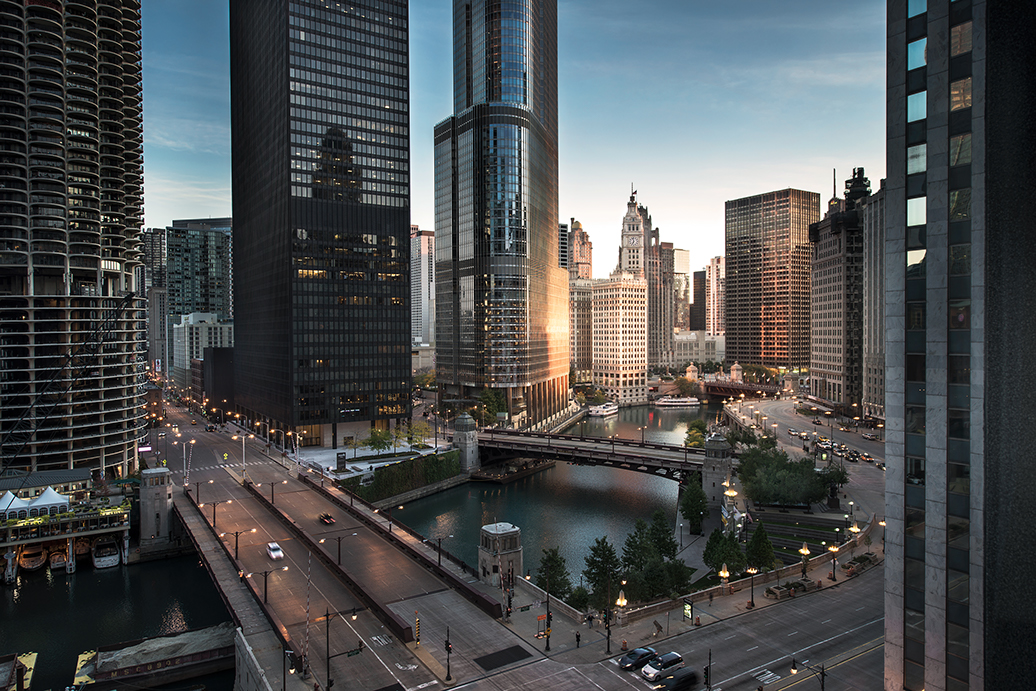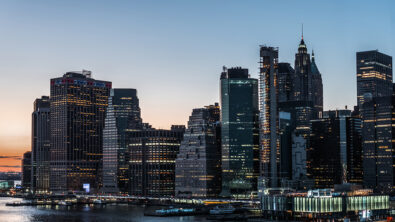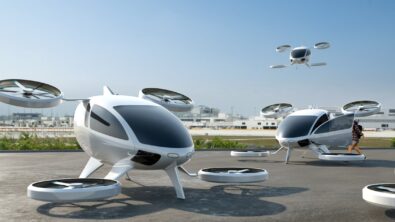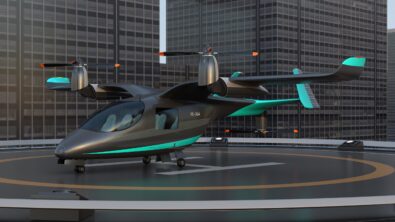Rethinking Infrastructure for AAM Part One – Transcript

In this episode of Talking Aerospace Today, Todd Tuthill is joined by John Nixon to begin discussing the infrastructure considerations to support future advanced air mobility fleets.
Patty Russo: Greetings and welcome to another episode of Talking Aerospace Today from Siemens Digital Industries Software. I’m Patty Russo and I’m responsible for global marketing of our aerospace and defense vertical here at Siemens. We’re glad you joined us as we continue the discussion around the new classification of aircraft, advanced air mobility, or AAM, and talking about the challenges that come with developing the aircraft and how we are going to overcome those challenges. Recently we discussed the challenge of autonomy and the necessary considerations for developing uncrewed AAM vehicles and some of the impacts of AAMs in operation. Today, we’ll discuss challenges related to the operation of AAM, specifically infrastructure. To guide us once again, we’re joined by Todd Tuttle, Vice President of A&D here at Siemens. Welcome back, Todd.
Todd Tuthill: Hey, Patty, great to talk to you. Man, this turned out to be a really interesting series of advanced air mobility, and I am really looking forward to today’s conversation. Good to be back.
Patty Russo: Likewise, and we have another guest for this episode. Joining us to offer expert insights on the topic of infrastructure is our guest John Nixon. John is Vice President of Energy, Chemicals, and Infrastructure here at Siemens. Welcome to our podcast, John.
John Nixon: Well, thank you, Patty and Todd. It’s great to join you for a conversation on infrastructure and it’s an area that is experiencing incredible transformation.
Patty Russo: Well, let’s kick off the discussion, shall we? So Todd, I’m going to start with you. Can you give our listening audience a quick recap on what we’ve covered so far on the topic of AAMs and then a general introduction to tee up the infrastructure challenges and topic related to operating AAMs?
Todd Tuthill: Happy to do that, but if I could before we get started, I just you know want to talk, speak to our regular listeners, you’re probably a lot like me. You’re from the aero industry or maybe auto and, you know, infrastructure, power is just something you take for granted. And you probably, you know, I’ve learned so much from just working with John and preparing for this episode, and I’m just going to say this is, this is cool stuff and I’m really happy to have John, just want to welcome on the podcast, happy to have him today. It’s really opened my eyes to the broader picture of infrastructure and electricity and the grid and all those things. So just really happy to have John on.
Todd Tuthill: But back to the topic at hand, talking about advanced air mobility and really what it’s going to take for the industry to become profitable. What are the things we have to overcome? And as you know, we’ve talked about four particular things. We’ve talked about autonomy, infrastructure, range and certification. We just finished a great couple of podcasts with Nand Kochhar, my counterpart in automotive and transportation on autonomy. Today, we’re going to focus on infrastructure. And we’re really going to look at two aspects of infrastructure. One is where in the world are all these taxis going to take off and land from? You know, where are they going to land? And then where, where are they going to get all the electricity to charge the batteries?
Todd Tuthill: And those are the two kind of topics we’ll talk about today. You know, I talk about air taxis. Sometimes they call them flying cars. As a matter of fact, you remember in the first episode we compared them to George Jetson’s car when we started because it’s really a new class of commercial air taxis, but these things have a wingspan of up to 50 feet. They can hold four to six people like a passenger car, but they’re really a lot larger than a passenger car. And sometimes if we think about them as we think about it as Uber, because you think about, you know, air Ubers and I talked about, you know, calling an air Uber, but the reality is these things are not going to come landing your driveway. You know, they’re not going to not going to stand on a busy city street and have the Uber land in the street, and have the air taxi, excuse me, land in the street in front of you. The reality is you’ve got to go to them.
Todd Tuthill: To build a viable business, they’ve got places to operate from in urban areas. And these facilities will be called vertical. Okay, vertiports are really a cross between airports and heliports and bus stations. They’re where air taxis will land and unload their passengers and cargo and reload, and they want to do this in about 15 minutes. You know, much faster than a commercial aircraft flight turns around. The plan is to put them just every few blocks in large cities because if you think, if the nearest vertiports ten blocks away, you know, and it takes you so long to get to the vertiport, you’ve erased the benefit of flying that air taxi.
Todd Tuthill: And then we’ll get to battery capacity because that’s really what we want to talk about today. And if you look at the typical battery capacity and what’s being designed today, we’re talking about 150 kilowatt hours. Now that may grow as better technology gets better and we’ll talk about that in an upcoming podcast, but we’re going to stick with that number of about 150, 125, 250 kilowatt hours to charge and we think about these vertiports probably going to recharge five, six, seven air taxis maybe to 80% capacity in 15 minutes. And if you do some simple math, and I still have an engineering degree, so I think I can still do some simple math. We’ll need about three megawatts of service.
Todd Tuthill: And you look at a large city like Manhattan having a hundred vertiports, that starts to be a lot of power, 300 megawatts. Or is it? And that’s why John’s here. You know, John Nixon’s come on to talk about. Is that a lot of power? What does that do to the grid? Is that going to be difficult? So that’s really where we want to start focusing, to start with Patty, if we could.
Patty Russo: Awesome. Yeah. And I am really glad that the two of you are here to talk about things like math and those things, because I’m not a math girl. So John, we’re going to dive right in. 300 megawatts of additional power for a large city is what Todd mentioned. Is that a lot of power?
John Nixon: Well, thank you, Patty. Let’s, let’s look at grid capacities across the globe. In the US, there is a robust but aging grid infrastructure that needs, you know, significant modernization to handle these kind of new demands. The US consumes about 4000 terawatt hours of electricity annually. While 300 megawatts is a substantial addition, or let’s say it’s a significant addition, it is very manageable. Right? When you look at the complete grid capacity. The country, the US, is investing heavily in renewable energy. So and it’s aiming to increase its share significantly in the coming years.
John Nixon: Let’s look at Europe. In Europe, particularly countries like Germany and France, there are significant strides in modernizing their grids and integrating renewable energy. However, further advancements are required to meet increasing demands and Europe’s energy transition policies are focused on increasing the share of renewables and enhancing grid resilience, which is what we’re talking about here, that resilience that’s so important. In the Middle East, for example, so it’s a bit of a mixed scenario. United Arab Emirates has an advanced grid infrastructure with a high integration of renewables, while many of the other countries are still struggling with older systems. And then of course, we have a really hot climate there that adds a significant strain.
John Nixon: And in Asia we see vast differences. Japan and South Korea, they’ve got advanced grids whereas countries in Southeast Asia, again, they’re facing some significant challenges in getting their current infrastructure in place, that’s equivalent to, say, Japan and South Korea. Rapid urbanization and industrialization that’s going on there in those regions, they really are necessitating substantial investment in grid capacity and modernization, think resilience. And on the impact of additional load, which is what we’re talking about here, integrating AAM infrastructure into these grids, hey, it’s going to have an impact. You know what’s crucial? It’s crucial to ensure that the power is available where and when needed, especially, Todd, and the urban areas you’re talking about.
John Nixon: This necessitates significant upgrades to local distribution networks, increased generation capacity and the integration of smart grid technologies to manage the load efficiently. And an area of, I have been spending some considerable amount of time recently in is advanced nuclear and the rise of small modular reactors which offer some, it offers reliable and low carbon power that can complement the renewables like wind and solar and they can provide a consistent base load supply helping to balance the intermittency that is normally associated with renewable energy, and this also of course lends to grid stability.
John Nixon: I want to talk about the grid for a moment. You know, when we talk about this, Todd, that’s what comes back to mind again and again. You know, reliability of electrical grids, it hits home, it hits close to home for me. In February 2021, Texas, where I live in Houston, Texas, we experienced a freeze that knocked out power for over 90% of the state for seven days. Texas was in the dark. Over four and a half million homes and businesses were without power. You had around 700 people that were killed directly or indirectly because of that loss of power, fossil and renewable power. They were both lost. Gas compression stations, right? They lost power.
John Nixon: And as you know, as reported in the Wall Street Journal, you had around $195 billion in damages with secondary impacts like 75% of polyethylene capacity was lost. 62% of polypropylene capacity and 57% of PVC capacity. Well, what does that really mean? That means that Honda halted production in the US and Canada because Texas lost its lights. Toyota curtailed their production. There were all of these secondary and tertiary effects because the grid failed in Texas, so the list is long that just one event caused, so we’ve got to be cognizant of the grid.
Todd Tuthill: Man, seven days without power in winter. That must have been miserable. And you bring up a really good point of how really interconnected our society is, where, you know this one thing over here, we lose power in Texas. I could have never imagined that we couldn’t build cars in Atlanta because we lost power in Texas, but that that makes sense. It’s, you know, kind of like COVID and the supply chain crisis, right? You had a problem over here and in one part of society and it affects all parts of society. So what I think you’re saying, John, is the that 300 megawatts is a lot of power, but it’s really not going to put a big strain on the grid. Maybe what we’re talking about is the reliability of the grid and its impact on advanced air mobility. Is that really right?
John Nixon: Exactly. The possibility of grid unreliability, it’s very real, and it poses significant risks to this burgeoning industry that you’re talking about. With air mobility. And let me just give you a couple, let me give you a few more examples. So I talked about Texas in February 21. Remember in California in August 2020, we had a combination of heat waves and high electricity demand and it led to rolling blackouts throughout the state and the event highlighted the challenges of balancing supply and demand and you’re talking about adding more demand. Especially, this was special to California who has been very reliant upon renewable energy.
John Nixon: Another historical point, Northeast blackout during August 2003, one of the largest blackouts in history affecting 50 million people in the US and Canada, and the outage was caused by a software bug in the alarm system of an energy management system in Ohio, and that led to a cascade of failures throughout the grid. And by the way, it’s not just the US. In India, in July of 2012, the world’s largest blackout affected over 620 million people, roughly 9% of the global population at the time. And the failure was due to overloading the grid by several states there drawing more power than allocated. I mean these are just examples that show grid reliability issues are not uncommon, and when they happen they have widespread and severe consequences.
Todd Tuthill: Yeah. And then consequences, if we think about time and I think about the introduction and advanced air mobility and I think we’ve talked about this in previous episodes, but I’ll say it again. There are no advanced air mobility aircraft approved or certified for commercial flight yet, but that’s going to happen soon. Volocopter made a big deal about being certified to carry real passengers at the Paris Olympics this summer. Unfortunately, that didn’t happen, but I think if you look at a number of the other players in the in the field, they’re saying 2025, 2026, we’re going to start seeing things get certified.
Todd Tuthill: We’re going to start seeing the vertiports being built and I think over time that’s going to build up and probably by 2030. And I’ve made this prediction before. I’ve said it before, I’ll say it again. I think by 2030 any of us will be able to go to a large city, New York, London, Tokyo, pull out our phones and ask for an Uber Air and be able to book it. And my prediction is by 2030 we’ll be doing that. So this topic we’re talking about, it’s not a problem today, but it’s something we’re going to have to deal with I think in in the coming few years.
Patty Russo: So when we’re talking about the strain on the grid and the impact that could potentially have a ripple effect, is there a sustainability aspect to this as well? For example, you know the source energy to charge the batteries that power the AAM vehicles, that matters Just as much as what the vehicles use to power themselves, right? So John, can you comment on that. You know, we’re talking traditionally fossil fuel based transportation industries. We talked a lot about the carbonization and green. What’s the state of the global electric power grid, how green is it really? Or how green can it be, you know, going forward?
John Nixon: So thanks for the question, Patty. You know we’re talking about reliability and sustainability as our species transitions and electrifies, you know, our economies here. So now let’s talk about sustainability for a moment. The sustainability of electric powered vehicles, including air taxis, it does heavily depend on the source of the electricity used to charge them. Let’s take a look at the current state of our global electric power grid and how green it is across different regions. In the US, around 20% of electricity comes from renewable sources, with wind and solar being the fastest growing. However, a significant portion still comes from natural gas, about 40% and coal about 19% and falling.
John Nixon: In Brazil, a leader in renewable energy in the region, there is well over 80% of its electricity coming from renewables, primarily hydroelectric power. In Europe, there is a substantial progress in integrating renewable energy. The EU aims to have 32% of its energy from renewables by 2030, kind of hand in glove with what you’re talking about, Todd, how this industry is will really see its day in 2030. You know, countries like Germany and Denmark are leading with renewables, contributing around 40 to 50% of their electricity production. The UK has also made significant strides, with renewables contributing over 40% of its electricity primarily from wind and solar. The Middle East, which I talked about earlier, is traditionally reliant on oil and natural gas for electricity, however, there are significant investments in solar energy, especially, in the UAE and Saudi Arabia. The UAE, United Arab Emirates aims to generate 44% of its power from clean energy by 2050. The.
John Nixon: And then if you look over in Asia Pacific, China is the world’s largest producer of renewable energy with a significant share coming from hydro, wind and solar power. How, you know, however, coal still dominates accounting for about 60% of its production capacity today. And India is also rapidly expanding its renewable energy capacity, and they’re aiming for about 175 gigawatts of renewable energy by 2024, 2025 and 450 gigawatts by 2030. But of course with them, as with China, coal still remains a major part of that energy mix. But falling.
John Nixon: It’s important to know that while the share of renewables is increasing, many regions still rely heavily on fossil fuels. This means that even electric vehicles can have a significant carbon footprint if the electricity used to charge them comes from non-renewable sources. Therefore, this push in, you know, advanced air mobility, it has to go hand in hand with efforts to green the grid. This involves increasing the share of renewables, which, as you can see, our species is doing, investing in grid infrastructure to support these distributed energy sources and exploring again, where I’ve been focusing also advanced nuclear technologies as a reliable low-carbon base load supply for energy.
Todd Tuthill: Wow, lots of lots of work going on to green the grid. Lots of work to be done to green the grid, John. And the question I get asked a lot is, you know, AAMs are going to be electric. Is that really going to have an impact on greenhouse gases in the aerospace industry? And I look at again the volume of what we’re going to see in terms of AAM flights. If you look at just today, you know we’re recording this in July of 2024, there’ll be more than 120,000 commercial flights above across the globe today. A few of them will be using SAF, nearly all of them will be using fossil fuel. If you look at the number of cab rides in Uber and taxi trips in Manhattan, NY, there’ll be nearly 1,000,000 of those in Manhattan alone. So when you look at those numbers, it’s hard to say that AAMs being electric will have a significant impact on greenhouse gases in the near future.
Todd Tuthill: But again, it’s a new technology and it’s proving that electricity can power things in new ways. Now there is another impact of our daily lives of somewhat sustainable impact that I think is far more significant in the AAM industry and it’s noise. Because we’re talking about now hundreds, potentially hundreds, of these aircraft flying around large cities and they’re probably going to fly about two thousand, four thousand feet high, they’re not going to fly at 35,000 feet like airliners do. The FAA and the other agencies are going to reserve a corridor, you know, half mile to a mile high in the sky.
Todd Tuthill: And imagine having hundreds of helicopters flying through that every day. It would be really noisy. It’d be an even more noisy place to live in a big city. The, one of the key aspects of these electric aircraft with their multiple rotor blades, they’re far, far quieter. It’s going to create a better experience on the ground and a better experience for passengers. So there’s many aspects to think about in designing a new kind of a vehicle and a new type of aerospace product and advanced air mobility products amd air taxis.
Patty Russo: No doubt these considerations, Todd, for designing AAM’s will drive further innovation and result in best practices for the industry in general. Such great insights in this discussion so far, but let’s pause here because we are out of time for today. We’ll pick up in the next episode where we left off. As always, a sincere thank you to those of you listening today to our conversation about building the infrastructure to support the burgeoning AAM sector in the aerospace and defense industry. I’m Patty Russo and we look forward to having you next time for Siemens Talking Aerospace Today podcast covering exciting topics in A&D.
Siemens Digital Industries Software helps organizations of all sizes digitally transform using software, hardware and services from the Siemens Xcelerator business platform. Siemens’ software and the comprehensive digital twin enable companies to optimize their design, engineering and manufacturing processes to turn today’s ideas into the sustainable products of the future. From chips to entire systems, from product to process, across all industries. Siemens Digital Industries Software – Accelerating transformation.


